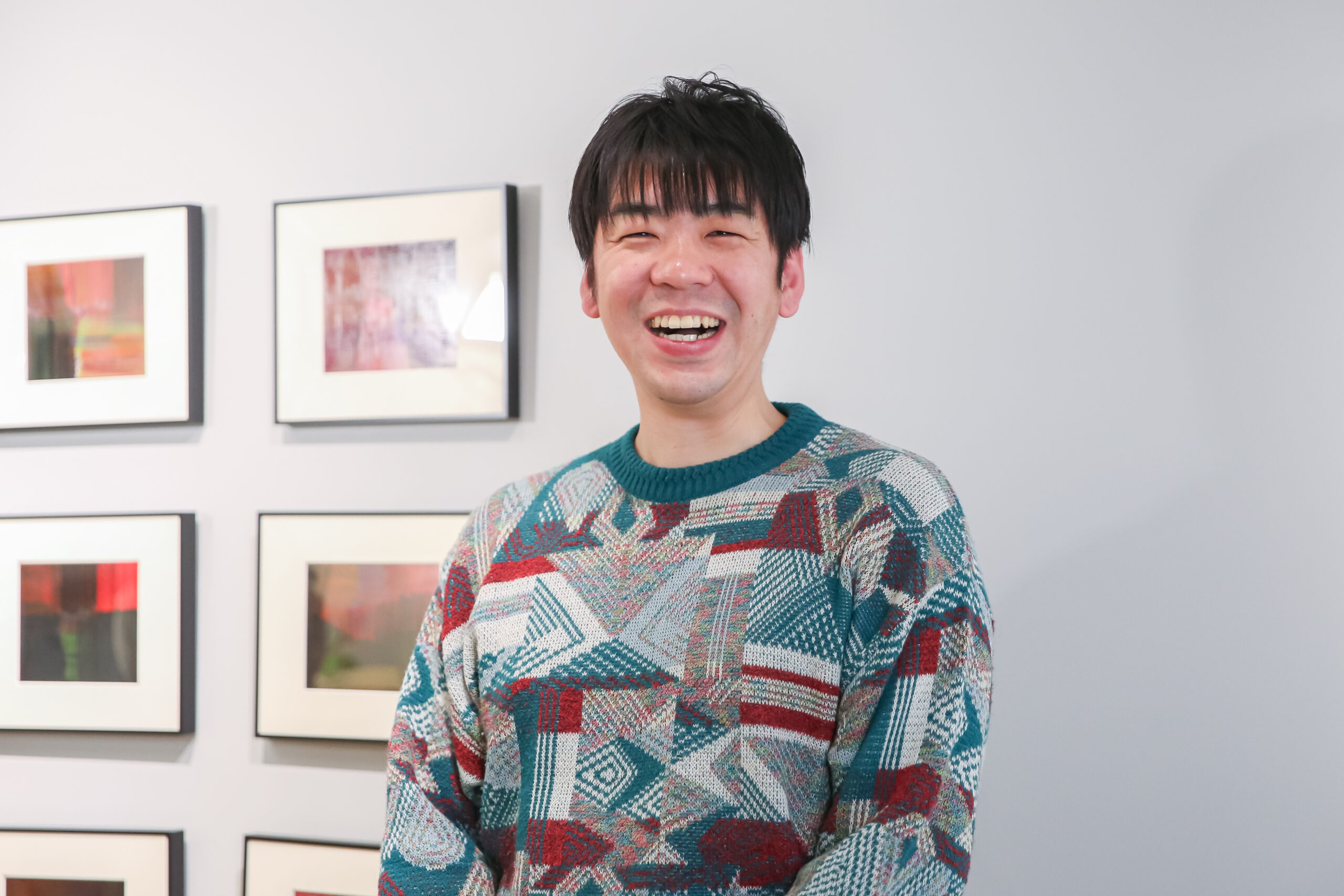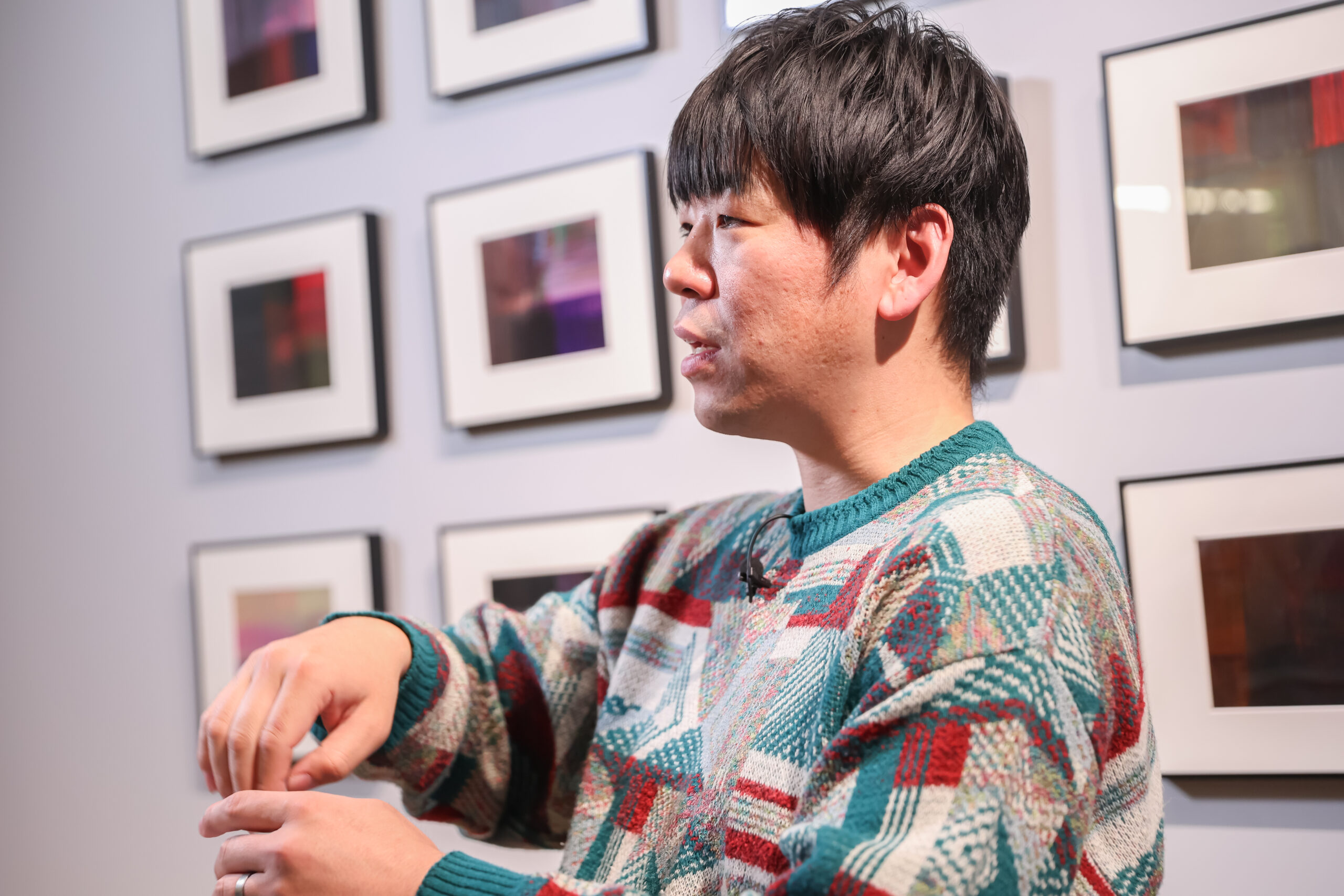Specializing in brain science and neuroscience, especially neuroscience related to consciousness, Shuntaro Sasai (Araya Inc.) is the sub-project manager of “IoB Middleware” and aims to build technologies that translate information between different systems such as brain to brain and brain to machine. In this interview, he talks about the current status of his research, as well as his thoughts on his research.

<strong>Creating a new form of communication</strong>
By using a brain-machine interface (BMI), a device which directly connects the brain to the machine to be operated, I am carrying out research to create “X Communication”, a new form of communication. You can think of it as a device that mediates telepathy between you and the machine.
The “X” in X Communication represents exodus (escape or liberation), expand (extension or development), and extra (other or new addition). In other words, X Communication is a new way of communication through BMI to realize our goal of freedom from various constraints.
As a matter of priority, we focus on helping those who feel speech impediments or have some difficulties in everyday communication, while we also hope to develop a new method of communication that allows any person to go beyond our innate communication methods.
If you understand others, you won’t hurt them.
When I was about in the third grade of elementary school, there were some tragic incidents, and I recognized that there are people in the world who hurt others. This resulted in the idea that if people could directly understand others’ pain, they would be less likely to hurt others. From then on, I developed an interest in human consciousness itself and the idea of utilizing such consciousness in communication.
Later on, when I was aspiring to study consciousness, my grandmother developed brain illness. She developed what is known as locked-in syndrome, a condition in which she understood what was being said but could not say anything by herself. In the end, I was not able to hear her last words and I regretted that I couldn’t complete my research on consciousness by then. This incident made me decide to dedicate myself wholeheartedly to the research.
Decoding language from highly detailed brain wave information
Existing research has revealed that language can be decoded from brain waves with a high probability if electrodes are implanted in the brain. In contrast, we are trying to decode language with a non-invasive EEG (electroencephalograph) without implanting electrodes in the brain, which places less psychological and physical burden on patients.
Our measurement method is categorized as non-invasive and can be done by simply wearing a hat or net-like object on the head with the electrodes touching the scalp. We also use a very high-density EEG, which has a great number of electrodes, roughly 5 to 20 times the number of electrodes of a conventional EEG. This allows us to obtain highly detailed and spatially high-resolution information.

Acquiring brain waves during speech
We have been trying to decode speech non-invasively with an ultra-high-density EEG. Recently, we have made some basic achievements. Our ultimate goal is to decode the language that people think in their heads. However, if their thoughts are kept in their head, it is impossible to know what they are thinking from the outside, making it also impossible to know if the decoding results are correct. Therefore, we tried to obtain brain waves related to the content of speech by comparing the brain wave data and the speech data simultaneously acquired during speech.
As a result, we found that only signals from the speech area, which contribute significantly to the speech process in the brain, contribute strongly to the decoding of speech. We believe we were probably the first in the world to reveal that it is possible to acquire neural activity by measuring brain waves during speech utterances in this way.

Dealing with electrical signals emitted by muscles
While we are speaking, not only the brain waves are being emitted, but many electrical signals are also being emitted from the muscles around the face. Since those electrical signals are stronger than the brain waves, they become noise in the acquisition of the brain waves.
So, we asked the participants to speak at the very minimum, just barely, in their minds, to avoid actually speaking out loud. Even when they do it, their mouths still move a little, causing muscular electricity to be emitted. However, it has been shown that it can be drastically curbed compared to when they actually speak aloud. We have also found that this improves the accuracy of the decoding.
Wishing to reduce conflicts in this world
What our team wants to do is to develop a method of communication in which what you think in your mind can be delivered directly to a machine or, ultimately, to the person you want to communicate with. However, I do not believe that communication is about delivering only words.
For example, when we say the word “dog,” we also imagine the dog’s face, the sound it makes, or memories of the dog we had. Therefore, we believe words are not generated only in the speech area of the brain, but may also be generated by completely different areas working together. In other words, images, sounds, and episodes that cannot be expressed by words alone should be important information for communication.
My motivation for my research is to reduce conflicts in this world. My dream is world peace. To achieve this, I hope to make it possible for everyone’s feelings to be communicated more directly. I am doing my research because I believe if we can combine consciousness and communication, we can create a communication infrastructure to connect hearts and minds by making use of them.

Think about what you want to achieve and live passionately!
We are living in an era of rapid social change. You are the ones who will play the leading role in these times. More specifically, it may be the generation after you and the generation after them. I hope you will think about what you want to achieve and live passionately in such a situation. We will work with you to shape that passionate desire. So I hope you will lend us your passionate energy. We look forward to working with you.
Interview, Writing, and Video Editing by Space-Time Inc.
